Benjamin Netanyahu has said an Israeli strike on a hospital in the Gaza Strip that killed 20 people, including five journalists, was a ‘tragic mishap’.
In the incident, Israel struck one of the main hospitals in the Gaza Strip, and then hit the facility again as journalists and rescue workers rushed to the scene, killing at least 20 people and wounding scores more, local health workers said.
It was among the deadliest of several Israeli strikes that have hit both hospitals and journalists over the course of the 22-month war sparked by Hamas‘ attack on October 7 2023, and the attack came as Israel plans to widen its offensive to heavily populated areas.
Netanyahu said that Israel ‘values the work of journalists, medical staff and all civilians’, and that the military is investigating the deadly incident.
The first strike hit a top floor of a building at Nasser Hospital in the southern city of Khan Younis.
Minutes later, as journalists and rescuers in orange vests rushed up an external staircase, a second projectile hit, said Dr Ahmed al-Farra, head of Nasser’s paediatrics department.
Among those killed was 33-year-old Mariam Dagga, a visual journalist who had worked for The Associated Press. Ms Dagga regularly reported for multiple outlets from the hospital, including a recent story for the AP on doctors struggling to save children from starvation.
The strike killed four other journalists who had worked for Al Jazeera, Reuters and Middle East Eye, a UK-based media outlet, most on a contractor or freelance basis.
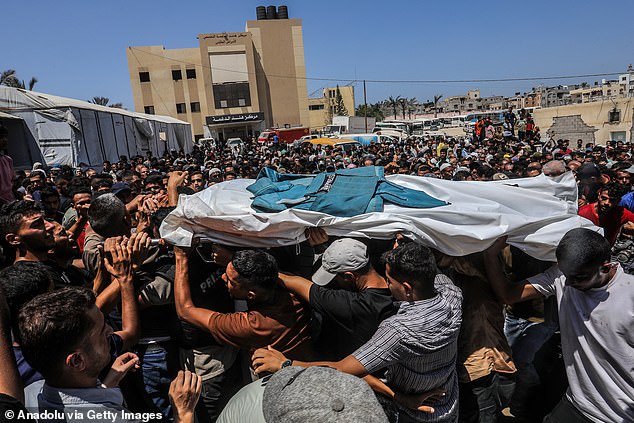
A funeral ceremony is being held in the courtyard of Nasser Hospital for Reuters photojournalist Hossam al-Masri, Al Jazeera cameraman Mohammed Salameh, journalist Maryam Abu Deqqa, who worked with several media outlets including Independent Arabia and AP, and NBC News journalist Moaz Abu Taha, all of whom were killed in an Israeli attack on the hospital in Khan Yunis, Gaza on August 25, 2025
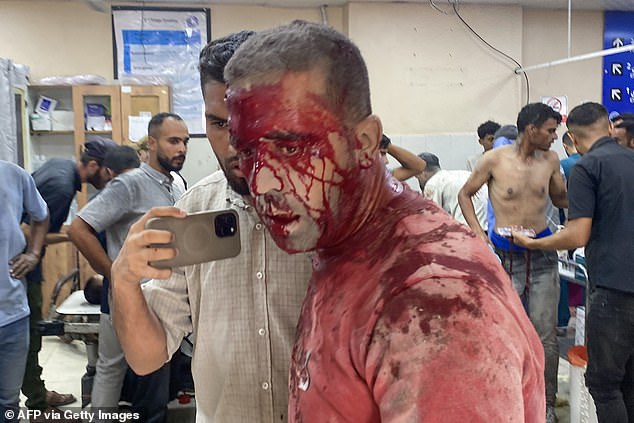
Photographer Hatem Omar, who was injured in Israeli strikes on Nasser hospital in Khan Yunis in the southern Gaza Strip on August 25, 2025
Brig Gen Effie Defrin, an Israeli military spokesman, said the army does not target civilians and had launched an internal investigation into the strikes.
He accused Hamas of hiding among civilians but did not say whether Israel believed any militants were present during the strikes on the hospital.
Mr Netanyahu’s statement said Israel ‘deeply regrets the tragic mishap that occurred today at the Nasser Hospital in Gaza’.
Israeli media reported that Israeli troops fired two artillery shells at the hospital, targeting what they suspected was a Hamas surveillance camera on the roof.
The UN secretary-general, along with the UK, France and others, condemned the attack.
When asked about the strike, US president Donald Trump initially said he was not aware of it before offering: ‘I’m not happy about it. I don’t want to see it.’
Israel has attacked hospitals multiple times throughout the war, asserting that Hamas embeds itself in and around the facilities, though Israeli officials rarely provide evidence.
Hamas security personnel have been seen inside such facilities over the course of the war, and parts of those sites have been off limits to reporters and the public.

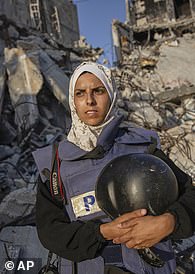
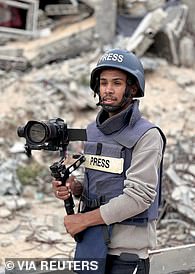
(From left to right) Hussam Al-Masri, Mariam Dagga and Mohammed Salama were three of the journalists killed by the Israeli strike
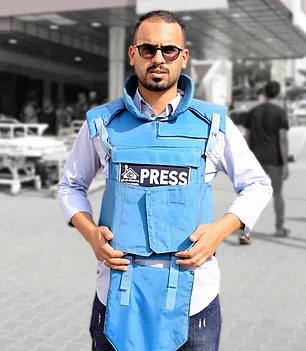
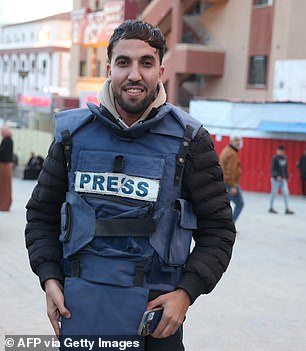
Ahmed Abu Aziz (left) and Moaz Abu Taha (right) were also tragically killed

A funeral ceremony held in the courtyard of Nasser Hospital for Reuters photojournalist Hossam al-Masri, Al Jazeera cameraman Mohammed Salameh and journalist Mariam Abu Dagga

A journalist holds a blood-covered camera belonging to Palestinian photojournalist Hussam al-Masri, a Reuters contractor who was killed in an Israeli strike on Nasser hospital in Khan Yunis in the southern Gaza Strip, during his funeral on August 25, 2025
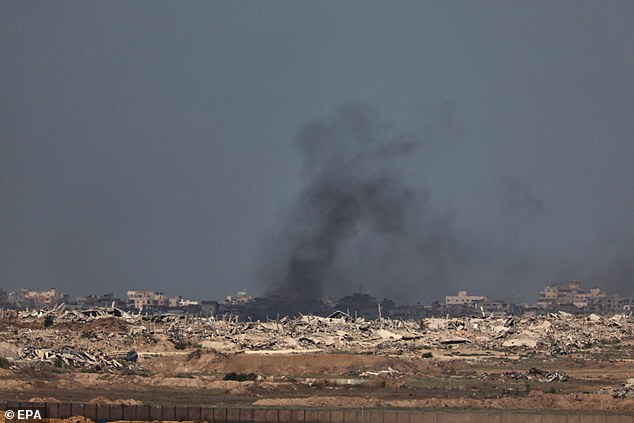
Smoke rises following Israeli airstrikes in the northern Gaza Strip as seen from the Israeli side of the border, August 25 2025
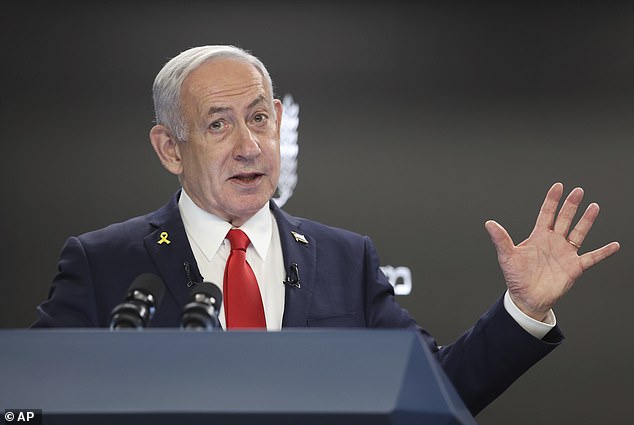
Benjamin Netanyahu (pictured) has said an Israeli strike on a hospital in the Gaza Strip that killed 20 people, including five journalists, was a ‘tragic mishap’
The hospitals that remain open have been overwhelmed by the dead, wounded and now by increasing numbers of malnourished as parts of Gaza are now in famine.
Alongside the strike on the hospital, Israel unleashed a wave of deadly airstrikes on Yemen’s capital on Sunday, with footage capturing a colossal fireball erupting near the presidential palace.
At least six people were killed and 86 wounded, according to the Houthi-run health ministry, with seven said to be fighting for their lives.
The strikes shook Sanaa overnight, hitting multiple sites including an oil facility, a major powerplant, and a military compound near the presidential palace.
Social media footage captured a huge orange fireball rising from the Asar oil facility, while residents reported terrifying blasts that shattered windows and sent smoke billowing across the city.
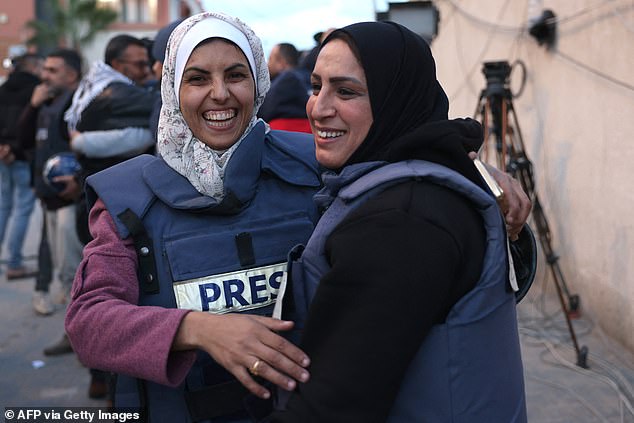
Mariam Dagga (L), a Palestinian visual journalist who freelanced for AP since the start of the war, hugs a fellow journalist in Khan Yunis in the southern Gaza Strip on January 18, 2025
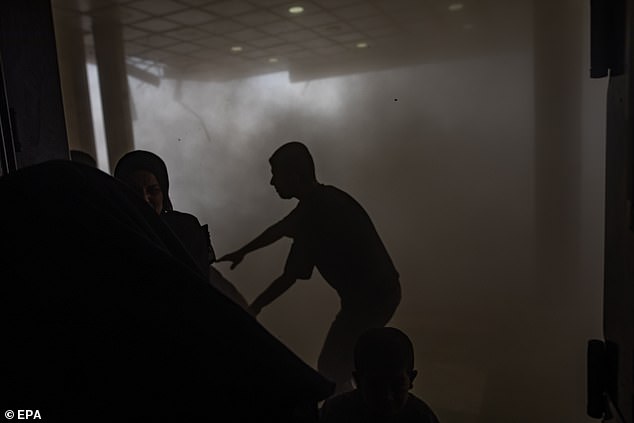
Palestinians flee following an Israeli airstrike targeting Nasser Hospital in Khan Younis, southern Gaza Strip, August 25 2025
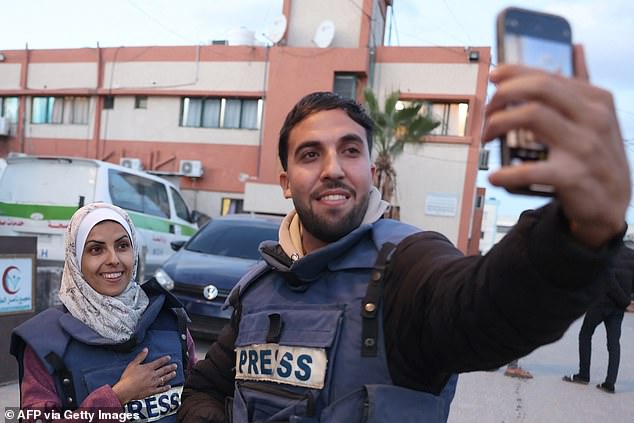
Moaz Abu Taha, a Palestinian journalist who had worked with some Palestinian and international outlets, takes a selfie with Mariam Dagga, a Palestinian visual journalist who freelanced for AP since the start of the war, in Khan Yunis in the southern Gaza Strip on January 18, 2025
Blazing flames formed a thick column up into the sky as a black mushroom cloud topped the blast. Onlookers were seen yelling in terror and running for their lives.
Following the explosion, a huge pillar of grey smoke lingered in the air before a second blast occurred – though it’s not clear whether this was caused by a second impact in the same spot.
‘The house was rocked, and the windows were shattered,’ local man Ahmed al-Mekhlafy told reporters. Another resident, Hussein Mohamed, said: ‘The sounds of explosions were very strong.’
Israel said the raids in Yemen targeted ‘key infrastructure’ used for military activities, including the Hizaz power plant – a vital electricity source for rebel operations.
Defence officials revealed that more than ten fighter jets took part in the assault.
Israeli Prime Minister Benjamin Netanyahu declared that the Houthis are ‘paying a heavy price for their aggression’ while Defence Minister Israel Katz confirmed that Israel’s air and naval blockade remains in place.
The Houthis, who have been firing missiles and drones at Israel and disrupting Red Sea shipping for almost two years, saying they are attacking in solidarity with Palestinians amid the war in Gaza, vowed to keep attacking.
Deputy media chief Nasruddin Amer defiantly wrote online: ‘Our military operations supporting Gaza won’t stop, God willing, unless the aggression is stopped, and the siege is lifted’.
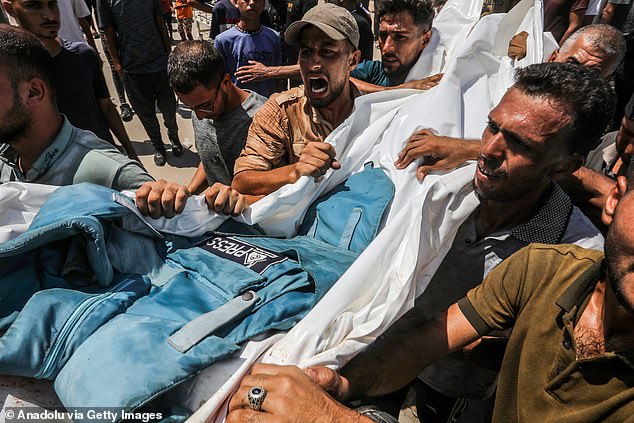
Israel has attacked hospitals multiple times throughout the war, asserting that Hamas embeds itself in and around the facilities

A view shows the fourth floor of Nasser Medical Complex damaged after an Israeli strike in Khan Yunis, Gaza, on August 25, 2025
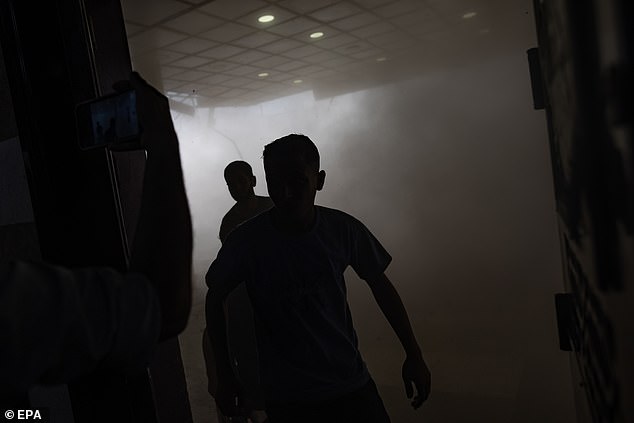
Mr Netanyahu’s statement said Israel ‘deeply regrets the tragic mishap that occurred today at the Nasser Hospital in Gaza’
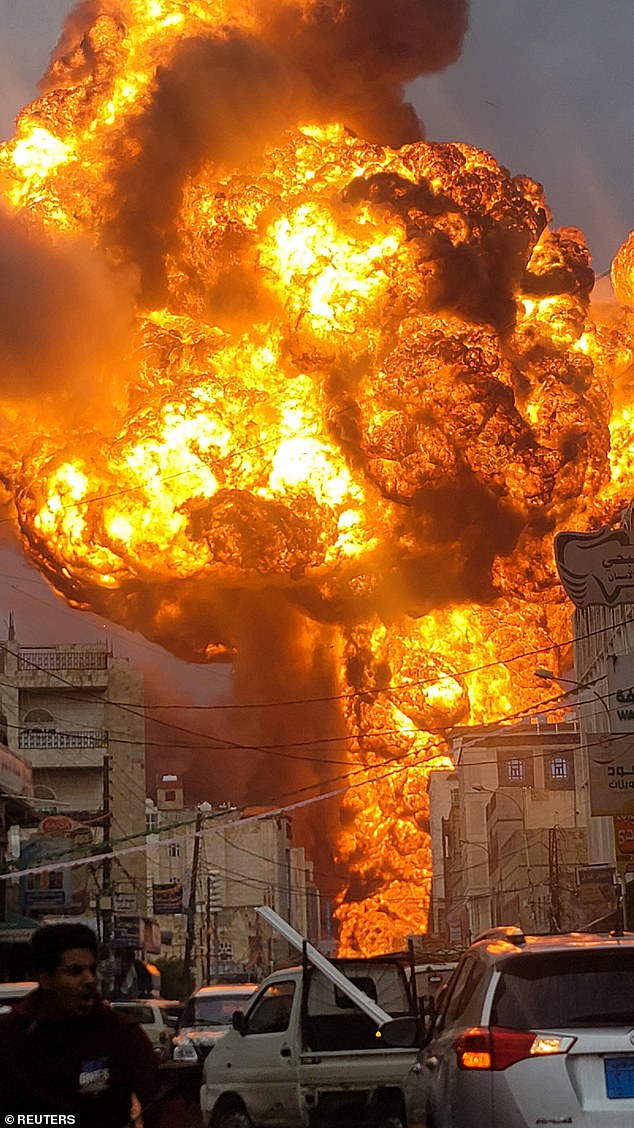
At least six people were killed and 86 wounded, according to the Houthi-run health ministry, with seven said to be fighting for their lives
The Israeli strikes were the first to hit Yemen since a week ago, when Israel said it targeted energy infrastructure it believed was used by the rebels.
It comes just days after Iran-backed Houthi rebels fired what the Israeli military claims was their first cluster bomb missile in nearly two years, during Friday’s attempted strike on Israel’s Ben Gurion Airport.
Israeli officials said the Houthi missile – believed to be Iranian-supplied – fragmented mid-air after several interception attempts. There was no reported damage or injuries.
An Israeli Air Force official, speaking on condition of anonymity in line with military regulations, called Friday’s projectile a new threat – a cluster munition, meant to detonate into multiple explosives on impact.
The use of cluster bombs makes interception more difficult and represents additional technology provided to the Houthis by Iran, the official asserted.
Shipping routes through the Red Sea – worth an estimated $1 trillion in global trade every year – have been thrown into chaos by more than 100 Houthi attacks on commercial and naval vessels since late 2023.
Although the US struck Houthi positions last year, Washington later brokered a deal to halt airstrikes in exchange for a pause in attacks on international shipping.
The rebels stopped the attacks during this year’s brief ceasefire in Gaza and later became the target of a weekslong airstrike campaign ordered by US President Donald Trump.
The strikes shook Sanaa overnight, hitting multiple sites including an oil facility, a major powerplant, and a military compound near the presidential palace
A fire ball rises from the site of an Israeli air strike in Sanaa, Yemen August 24, 2025
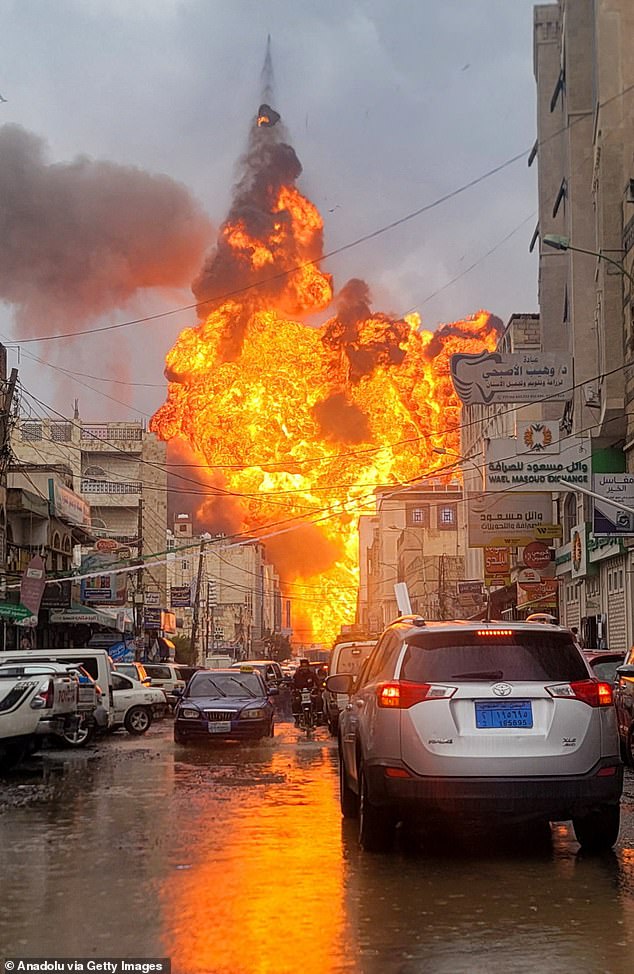
Social media footage captured a huge orange fireball rising from the Asar oil facility, while residents reported terrifying blasts that shattered windows and sent smoke billowing across the city
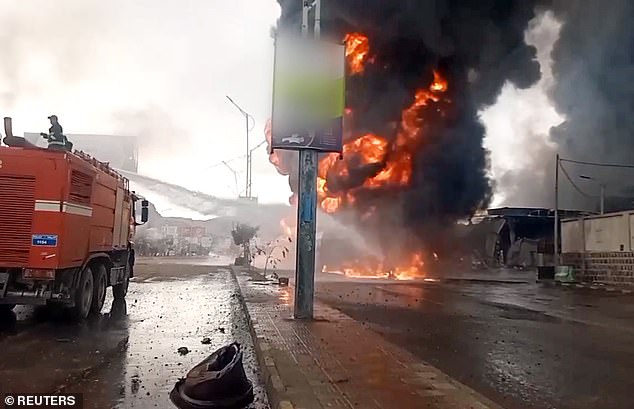
Flames and smoke rise from the area as military statement claimed that the strikes targeted Houthi infrastructure in Sanaa, including the Asar and Hizaz power plants, a site for storing fuel, and a military site in which the presidential palace is located
In May, the United States announced a deal with the Houthis to end the airstrikes in return for an end to attacks on shipping, although the rebels said the agreement did not include halting attacks on targets it believed were aligned with Israel.
Last month, the Houthis said they would target merchant ships belonging to any company that does business with Israeli ports, regardless of nationality, as part of what they called a new phase of operations against Israel.
In May, Israeli airstrikes hit the Sanaa airport in a rare daytime attack that destroyed the terminal and left craters in its runway.
At least six passenger planes were hit, including three belonging to Yemenia Airways, according to airport authorities.












